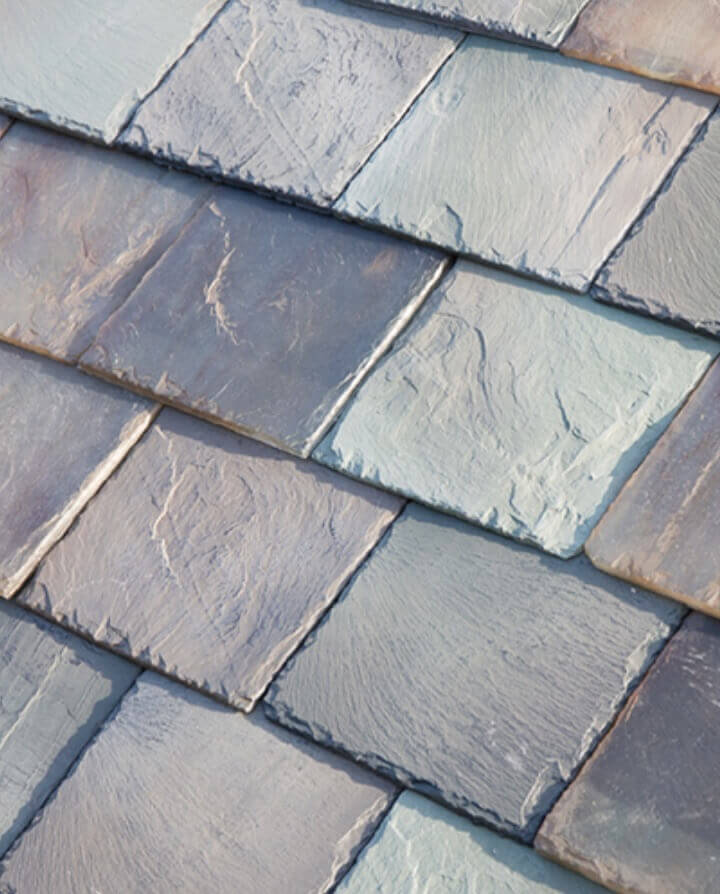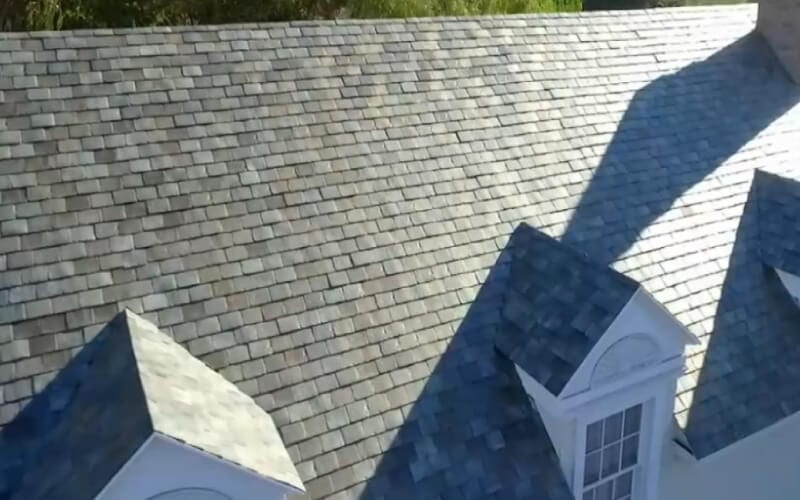

#telsa #tech #solarcity #energy #solar #solarpower #elonmuskĪ post shared by TechCrunch on at 4:48pm PDT

Tesla's new solar roof tiles look like they could handle some pretty extreme hail. That’s because of the toughness of the glass used in their construction, according to Musk, who demonstrated the results of heavy impact from above, using a kettlebell as you can see in the video below. Tesla’s tiles will actually be more resilient than traditional roofing materials, including terra-cotta, clay and slate tiles. But Musk’s claims about the new benefits of the new solutions don’t end there. Musk says that the overall cost will still be less than installing a regular old roof and paying the electric company for power from conventional sources. Tesla’s solar tiles claim to be able to power a standard home, and provide spare power via the new Powerwall 2 battery in case of inclement weather or other outages. As strange as it sounds, “buying a roof because you like your car” might be the new “buying a computer because you like your phone.” Benefits beyond basic solar Tesla, like Apple, scores well with customer satisfaction and brand commitment, and that’s something that no one trying to sell a solar home energy system at scale can match. It’s strange to think of halo effects with big-ticket items, including vehicles and home energy systems, but Tesla’s fan base shares a lot of characteristics with Apple’s, and because they’re already purchasing at the level of an entire automobile, the frame of reference for what constitutes a valid halo purchase is actually appropriate. Tesla has been referred to as the Apple of the automotive world by more than a few analysts and members of the media, and if there’s one thing Apple does well, it’s capitalize on the so-called “halo effect.” This is the phenomenon whereby customers of one of its lines of business are likely to become customers of some of the others iPhone buyers tend to often go on to own a Mac, for instance.įor Tesla, this represents an opportunity to jump-start its home solar business (which it’ll take on in earnest provided its planned acquisition of SolarCity goes through) through the knock-on effects of its brisk Tesla EV sales, including the tremendous pre-order interest for the Model 3. Neither is very likely to strike a truly broad audience of users as acceptable, and neither are solar panels that don’t succeed in completely disguising themselves as such. It’s like the VR headset - Oculus and Google can make claims about their use of fabric making their headsets more approachable, but both are still just options somewhere along the curve of things with niche appeal. Existing solar designs, and even so-called attempts to make them more consistent with traditional offerings like the above-mentioned Dow Chemical project, leave a lot to be desired in terms of creating something that can be broadly described as good-looking. The appearance of the tiles, which come in four distinct flavors (Textured Glass, Slate Glass, Tuscan Glass and Smooth Glass) is going to be a core consideration for prospective buyers, especially those at the top end of the addressable market with the disposable income available to do everything they can to ensure their home looks as good as it possibly can.Īs with other kinds of technologies that are looking to make the leap from outlier oddity to mainstream mainstay, solar has a hurdle to leap in terms of customer perception.

It’s easy to dismiss the aesthetic import of how Tesla’s tiles look, but it’s actually important, and a real consideration for homeowners looking to build new homes or revamp their existing ones. Still others aren’t clear on Tesla’s goals with this product, or how it fits into the company’s overall strategy relative to its electric vehicles. Others are wary of Tesla’s ability to sway consumers with a solar solution that sounds like it’ll still be quite expensive in terms of up-front (or, with payment plans, deferred but net) installation costs. I’ve heard from some people suggesting that this is nothing new, because of other similar previous projects, including Dow Chemical’s canned solar shingle project, for example. Why does it matter that Tesla is making a fashion statement when the point is green power and a future where we aren’t so dependent on fossil fuels? Sure, it’s a neat trick, but what’s the big deal? Few of us in attendance, if any, realized the solar roofing tiles were actual functional solar panels until Elon Musk said so. On October 28, Tesla unveiled its new solar roof tiles.


 0 kommentar(er)
0 kommentar(er)
